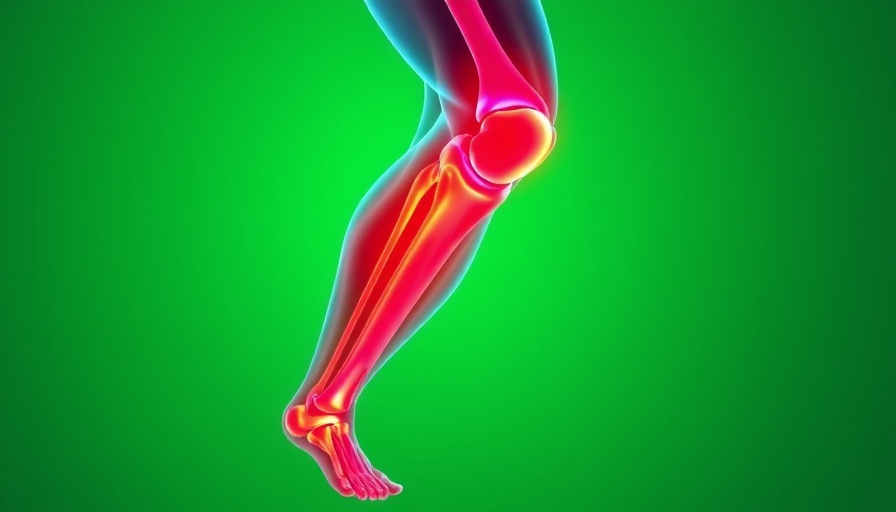
Understanding Knee Health: Your Body's Foundation
Our knees are crucial joints that bear the weight of our bodies with every step, yet they are often neglected until problems arise. As we age, many people experience aching knees, stiffness, and reluctance to squat or kneel, especially after years of wear and tear. It's important to realize that protecting your knees isn't just a concern for older adults; in fact, the deterioration may start as early as your thirties. Factors such as a physically demanding job, sports activities, or even your genetic predisposition can affect knee health and lead to serious issues down the line.
The Mechanics of Knee Joint Health
In this exploration of knee longevity, it's essential to understand the mechanics behind this complex joint. The knee is not just a hinge; it consists of numerous components including bones, cartilage, ligaments, and surrounding muscles that work in concert to provide stability and support. Anikar Chhabra, an orthopaedic surgeon, explains that just walking can place a force that is 1.5 times your body weight on these joints. Each step impacts the cartilage, and if it becomes worn or damaged, the resultant pain can significantly affect one’s mobility and quality of life.
Exercise: The Key to Future-Proofing Your Knees
Research shows that one of the most effective ways to maintain healthy knees is through targeted exercise. Strengthening the hamstrings, gluteal, quadriceps, and calf muscles surrounding the knee can provide the essential support these joints need. When these muscle groups are strong and work in harmony, they absorb shock and reduce stress on the knee joint, thereby alleviating pain and improving function.
Moreover, engaging in regular exercise has been shown to enhance the health of cartilage itself. Alexis Colvin, a professor of orthopaedic surgery, notes that synovial fluid acts like motor oil for the knees, facilitating smooth movement. Exercise helps stimulate the production of this vital lubricant, reducing stiffness and inflammation. Incorporating just a few minutes a day for knee-strengthening exercises can delay or even prevent the need for knee replacement surgeries and improve overall joint health.
Nurturing Your Knees: Practical Tips and Insights
As knee health becomes increasingly essential, especially for older adults, the benefits of a proactive approach cannot be overstated. Here are some simple but effective strategies to maintain your knee health:
- Incorporate Strength Training: Focus on leg exercises that strengthen the surrounding muscles, such as leg lifts, squats, and step-ups.
- Stay Active: Aim for a mix of cardiovascular workouts alongside strength training, as this can improve overall fitness and knee support.
- Prioritize Proper Footwear: Ensure your shoes provide adequate support to help mitigate stress on your knees while walking or exercising.
Long-Term Benefits of Knee Maintenance
By investing time and effort in strengthening your knees now, you pave the way for a more mobile future. Research continues to support the notion that proactive care can significantly reduce the risk of falls among older adults, lower pain levels in osteoarthritis patients, and improve function in those already experiencing knee issues. Establishing a routine that integrates knee exercises not only enhances physical activity but also fosters independence and enhances quality of life.
Conclusion: Take Charge of Your Knee Health Today
The journey to future-proofing your knees begins with simple changes in your lifestyle. Whether you’re still in your thirties or already facing knee challenges, it’s never too late to start. Prioritize your knee health through regular strengthening exercises, and embrace an active lifestyle that safeguards your mobility.
 Add Row
Add Row  Add
Add 




Write A Comment